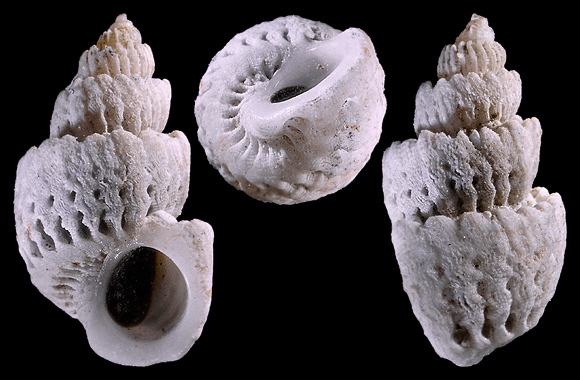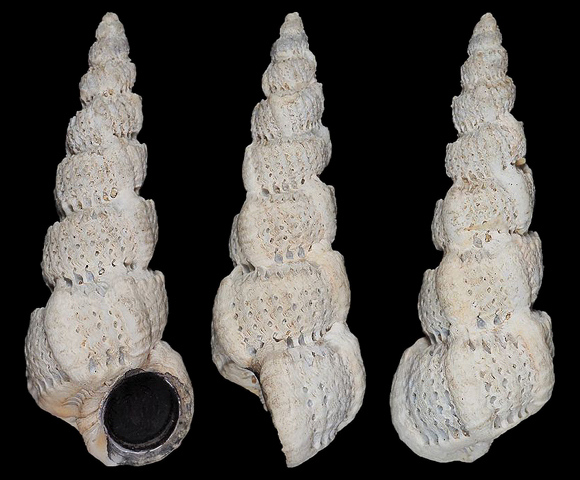
Protonym: Turbo pumiceus. Synonyms: cochlea, serrata…
6m deep, Duće, Omiš, Split-Dalmatia Comitat, S. Croatia. 32,1mm. Original pictures provided by R. Stanić (HR).
– (CC BY-NC-SA) –
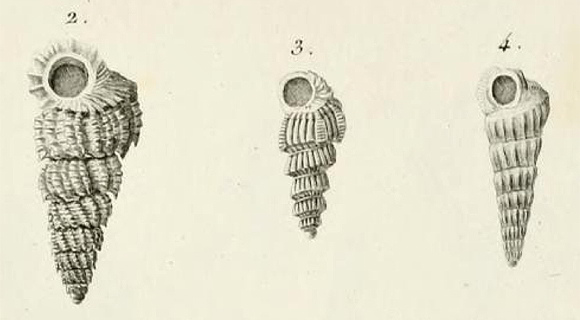
« Testa turrita, imperforata, transversim sulcata, longitudinaliter costata, costis callosis, interstitiis lamellaribus, anfractubus scalariformibus, apertura rotunda. […] the longitudinal lamellae, joining together, form enlarged and variciform ribs; the intervals that remain between them are occupied by other prominent thinner ribs etc. »
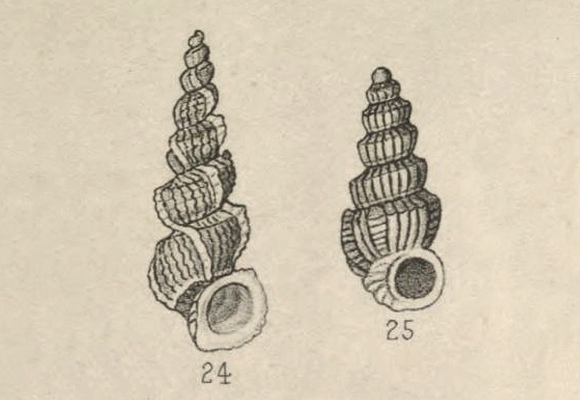
« White, spirally striate, fimbriating the numerous rather thin, sharp longitudinal lamellae, with occasional thick tubercular lamellae ; whorls 8, with flattened shoulder and deep suture, basal rib fimbriated. Length, 1.5 inch. – Mediterranean Sea, Madeira, W. Coast of Africa, West Indies. – Distinguished from the preceding species by its flattened shoulder and general corkscrew-like appearance. The name of varicosa has been applied to this species but the figure in the Encyc. Meth. cited by Lamarck, although very poor, could never be mistaken for cochlea. Brocchi, in 1814, described an Italian fossil under the name of S. pumicea (fig. 25) which has been identified by several good naturalists with the present species ; if this identification be correct, Brocchi’s name should have precedence, but I am not satisfied of this. Another name for the fossil species is probably S. serrata Calcara. »
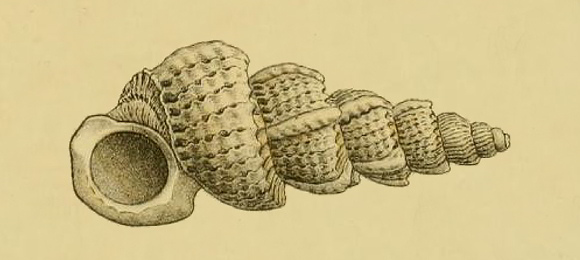
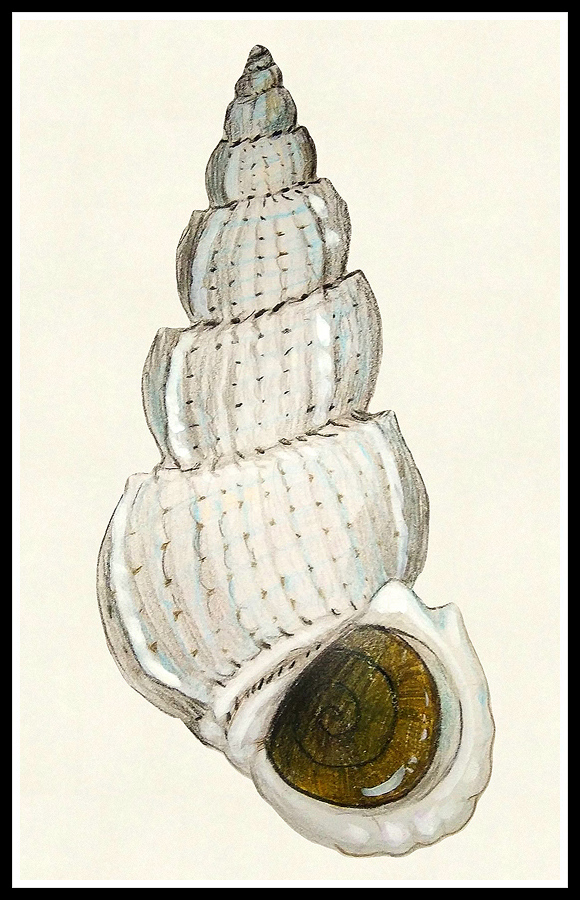
The shell varies in sculpture, microsculpture and shape. Hence a large number of synonyms for extant and extinct groups. For example, regarding the Scalaria pallaryi de Boury, its author wrote: « The living shell that occurs in Mediterranean, where, besides, it is very rare, was assimilated by all the authors to S. pumicea Brocchi, a form whose name is quoted at any time, but which, actually, is rather poorly understood by the majority. The true S. pumicea is pliocene exclusively. […] S. Pallaryi is stockier; its whorls are larger and more elevated, the suture shallower. Lastly, the aperture is smaller. The canal at the middle of the base is barely suggested, while it is well marked in the pliocene species. […] This species seems to be the current representative of a whole phylum, which includes, inter alia, the S. Bourgeoisi from the Helvetian of Pont Leroy and of the surroundings of Orthez, le S. comitalis de Stef., from the pliocene of Sienne, which may be the young of Sacco’s S. expumicea… » – E. de Boury: “Descriptions de Scalidae nouveaux ou peu connus”, Journal de Conchylioliologie vol. 60(2), Paris 1913, p. 172. Above: the species pictured by J. Higueras Gimenez (ES) – (CC BY-NC-ND).
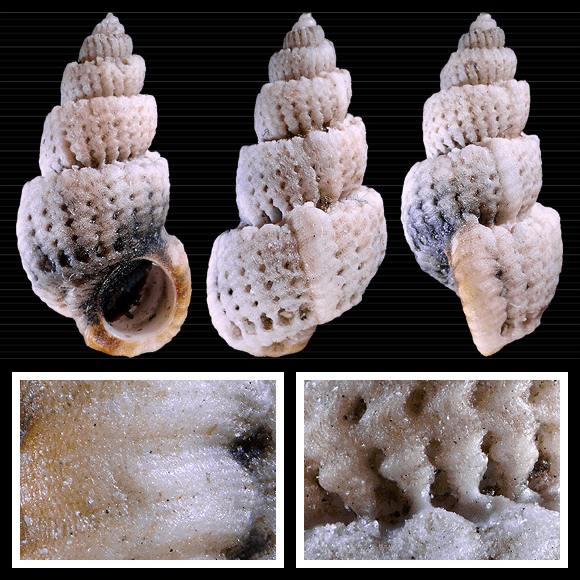
J. I. Nestares Pleguezuelo legit (ES).
The shape of the fully adults is usually much more slender, as it can be seen in the various drawings shown supra. Notice the dense intritacalx that cover the whole surface. This interesting outer layer, which could have the same utility than the more commonly encountered periostracum, is made, in the same proportions than in the underlying shell, with crystals of calcite and aragonite, which are deposited in arrangements that do not necessarily correspond to the microsculpture of the shell itself. The major difference between the shell and the intritacalx is given by the very low proportion of the proteinic matrix (conchiolin) in the latter. For more details, cf. D’Attilio & Radwin: “The Intritacalx, an undscribed shell layer in mollusks”, The Veliger vol. 13(4), Berkeley 1971, p.344.
